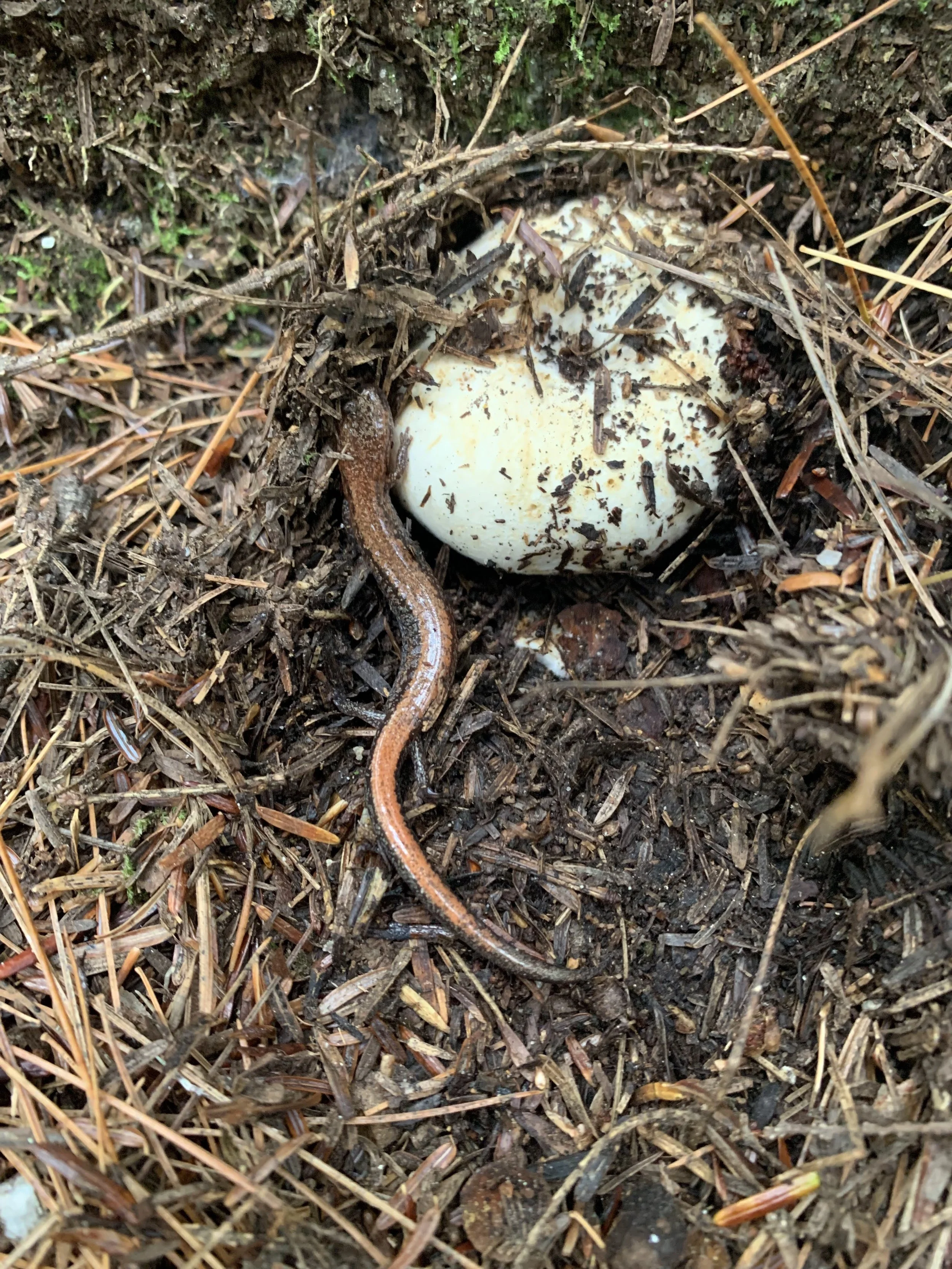Red-backed Salamander
The Red-backed Salamander (Plethodon cinereus) is one of the most common salamanders in our EcoRegion, and across the eastern US. It is 2-4” long, with a dark body and a distinctive, wide red stripe running from its head to its tail. There is also a “leadback” color morph, which is only dark grey.
These salamanders are found under rotting logs in wooded areas, especially those of paper birch.
When frightened, they will “drop” their tail; it wiggles frenetically while the salamander escapes. Most salamanders lay their eggs in water, but these salamanders lay their eggs under decomposing logs. To keep them moist, the mother curls around the eggs until they hatch. After hatching and leaving their nest, red-backeds hunt small invertebrates, especially ants.
They are lungless, breathing entirely from air filtering through their skin, and spend the winters dormant in underground tunnels.
What do you love about this particular creature?
What do they reveal to you about God and our faith?
Google tells me that this salamander is rarely found, but my experience is the opposite.
Under the right conditions, I find these endearing animals constantly while out with participants in my nature programs. I am a naturalist, educator, and Episcopalian, helping to bring people into a deeper relationship with the outdoors and explore the intersection of Christianity and nature.
As I see time and time again, there is nothing like holding a salamander to spark a person’s awe and wonder at the natural world. With their wide yet little eyes, their almost-smiling mouths, and their tiny individual toes, salamanders are animals that look otherworldly and familiar at the same time.
Both adults and children holding a salamander will have delighted smiles and wide eyes as they gently, reverently take in those details. And I, watching them, will smile and remember the many ways God invites us all to be a part of our earth.
Author - The Rev. Linden Rayton
The Rev. Linden Rayton is a nature educator and Episcopalian, owner of Living Water Nature Programs. They live in Hopkinton, NH, ancestral land of the Abenaki; their town is semi-rural and offers many ways to be outdoors, from trails to farms to neighborhoods.
God of moss and mountains, thank you for the diversity of creatures that praise you by their being. May we likewise show forth your glory with our bodies, hearts, and lives, in the name of your Son Jesus, the firstborn of Creation. Amen.
Prayer by Rev. Rachel Field
